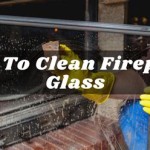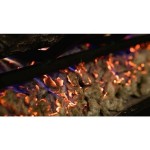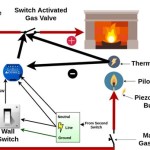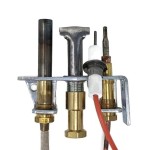Floating Shelf Under Fireplace: Aesthetics, Safety, and Installation Considerations
The placement of a floating shelf beneath a fireplace has become an increasingly popular interior design trend. It offers a seemingly elegant solution for adding storage or display space to an otherwise often-underutilized area. However, this design choice is not without its complexities and potential drawbacks. Factors such as heat exposure, structural integrity, and adherence to building codes require careful consideration to ensure both aesthetic appeal and functional safety.
This article will explore the nuanced aspects of installing a floating shelf under a fireplace, examining the potential issues, offering guidance on mitigating risks, and providing information to facilitate informed decision-making. The goal is to provide a comprehensive understanding of the considerations necessary for successfully integrating a floating shelf into a fireplace design while maintaining safety and code compliance.
Heat Exposure and Material Selection
The primary concern with placing any material near a fireplace is heat exposure. Fireplaces generate significant heat, especially during prolonged use. The radiant heat can affect the shelf material, leading to warping, discoloration, or even combustion, depending on the shelf's composition and proximity to the firebox or heating element. Therefore, careful consideration of the shelf material is paramount.
Wood, while aesthetically pleasing and commonly used for shelving, is inherently susceptible to heat damage. Certain wood species are more resistant to heat than others, but all wood will eventually degrade with prolonged exposure to high temperatures. The type of finish applied to the wood also plays a role. Flammable finishes can pose a fire hazard, while heat-resistant finishes may offer a degree of protection. However, even heat-resistant finishes can break down over time, necessitating regular maintenance and inspection.
Alternative materials such as stone, concrete, or metal offer superior heat resistance compared to wood. Stone, specifically, provides an inert surface that will not combust or degrade under normal fireplace conditions. Concrete, while porous and potentially susceptible to cracking under extreme temperature fluctuations, can be treated with sealants to enhance its durability and resistance to heat. Metal, particularly steel, offers excellent heat resistance and structural strength, but its aesthetic may not be suitable for all design preferences.
Regardless of the chosen material, it is crucial to maintain a safe distance between the fireplace opening or heating element and the bottom of the shelf. Building codes often specify minimum clearance requirements for combustible materials near fireplaces. These requirements are designed to prevent fires and ensure the safety of occupants. Consulting with a qualified building inspector or contractor is advisable to ensure compliance with local regulations.
Furthermore, the type of fireplace significantly influences the heat generated and distributed. Gas fireplaces, for example, typically produce less radiant heat than traditional wood-burning fireplaces. Electric fireplaces, on the other hand, generate heat through a heating element, which may concentrate heat in specific areas. Understanding the specifics of the fireplace type is crucial for determining the appropriate shelf material and safe distance requirements.
Structural Integrity and Installation Techniques
The structural integrity of a floating shelf under a fireplace is another critical consideration. Floating shelves, by their nature, lack visible support brackets, creating the illusion of floating in mid-air. This aesthetic requires a robust internal support system capable of bearing the weight of the shelf itself and any items placed upon it. The type of wall construction also influences the choice of mounting hardware and installation techniques.
Traditional floating shelf installation relies on hidden brackets or support rods embedded within the shelf and anchored to the wall studs. The spacing and size of these brackets must be carefully calculated based on the shelf's dimensions, material, and intended load capacity. Installing the brackets directly into wall studs provides the most secure attachment, but this may not always be possible due to stud placement or fireplace construction.
In situations where studs are not conveniently located, alternative anchoring methods may be necessary. Drywall anchors, while suitable for lightweight items, are generally not recommended for floating shelves under fireplaces due to the potential for increased load and the risk of heat-induced weakening of the drywall. Toggle bolts or molly bolts provide a more secure connection, but they require larger holes and may compromise the structural integrity of the wall if overused.
For heavier shelves or those intended to support substantial weight, consider reinforcing the wall structure behind the shelf. This may involve adding additional studs, installing a backing board, or using specialized anchoring systems designed for heavy-duty applications. Consulting with a structural engineer or experienced contractor is recommended for complex installations or when dealing with unusual wall construction.
The installation process itself requires precision and attention to detail. Accurate measurements and careful drilling are essential to ensure that the shelf is level, securely attached, and able to bear the intended load. Using a level and stud finder is crucial for proper alignment and bracket placement. Applying construction adhesive in conjunction with mechanical fasteners can further enhance the shelf's stability and prevent sagging over time.
Design Considerations and Fire Safety Protocols
Beyond the technical aspects of material selection and structural integrity, careful consideration should be given to the overall design and its compatibility with existing fire safety protocols. The presence of a floating shelf can potentially obstruct the airflow around the fireplace, impacting its efficiency and potentially increasing the risk of smoke or carbon monoxide buildup.
The shelf's depth and placement need to be planned with an eye towards the fireplace's air intake and exhaust vents. Obstructing these vents can hinder proper combustion and ventilation, potentially leading to incomplete burning and the release of harmful gases into the living space. Consult the fireplace manufacturer's specifications for recommended clearance requirements around the unit.
Furthermore, the items placed on the shelf should be chosen with safety in mind. Avoid placing flammable materials, such as paper, fabrics, or decorative items containing volatile substances, directly on the shelf. Even seemingly innocuous items like candles or scented oils can pose a fire hazard if placed too close to the heat source. Consider using heat-resistant containers or displaying non-flammable decorative objects.
Regular maintenance and inspection are essential for ensuring the ongoing safety of a floating shelf under a fireplace. Periodically check the shelf for signs of warping, cracking, or discoloration. Examine the mounting hardware for looseness or corrosion. Clean the shelf regularly to remove dust and debris, which can contribute to fire hazards. Ensure that smoke detectors and carbon monoxide detectors are properly installed and functioning correctly in the vicinity of the fireplace.
When designing the area around a fireplace, carefully assess all factors including the type of fireplace, materials used for the shelf, the installation procedure, and fire safety. By taking these precautions, a floating shelf under a fireplace can be a beautiful addition to a home.

Matte Distressed Floating Shelf

10 Ways To Work With Floating White Shelves Living Room Fireplace Family Design

8 Ways To Frame Your Fireplace With Shelves

Fireplace Floating Shelves Design Ideas

25 Floating Shelves Around Fireplace Ideas For Your Home

Bluehost Com Floating Shelves Living Room Remodeling

Fireplace Mantle Mantel Beam Floating Shelf Rustic Wooden Wood Shelving Farmhouse Decor Modern

Fireplace Floating Shelves Design Ideas

Modern Floating Mantel Shelf Industrial Mantle Contemporary

Collection Of Premium Wood Fireplace Mantels Dogberry








